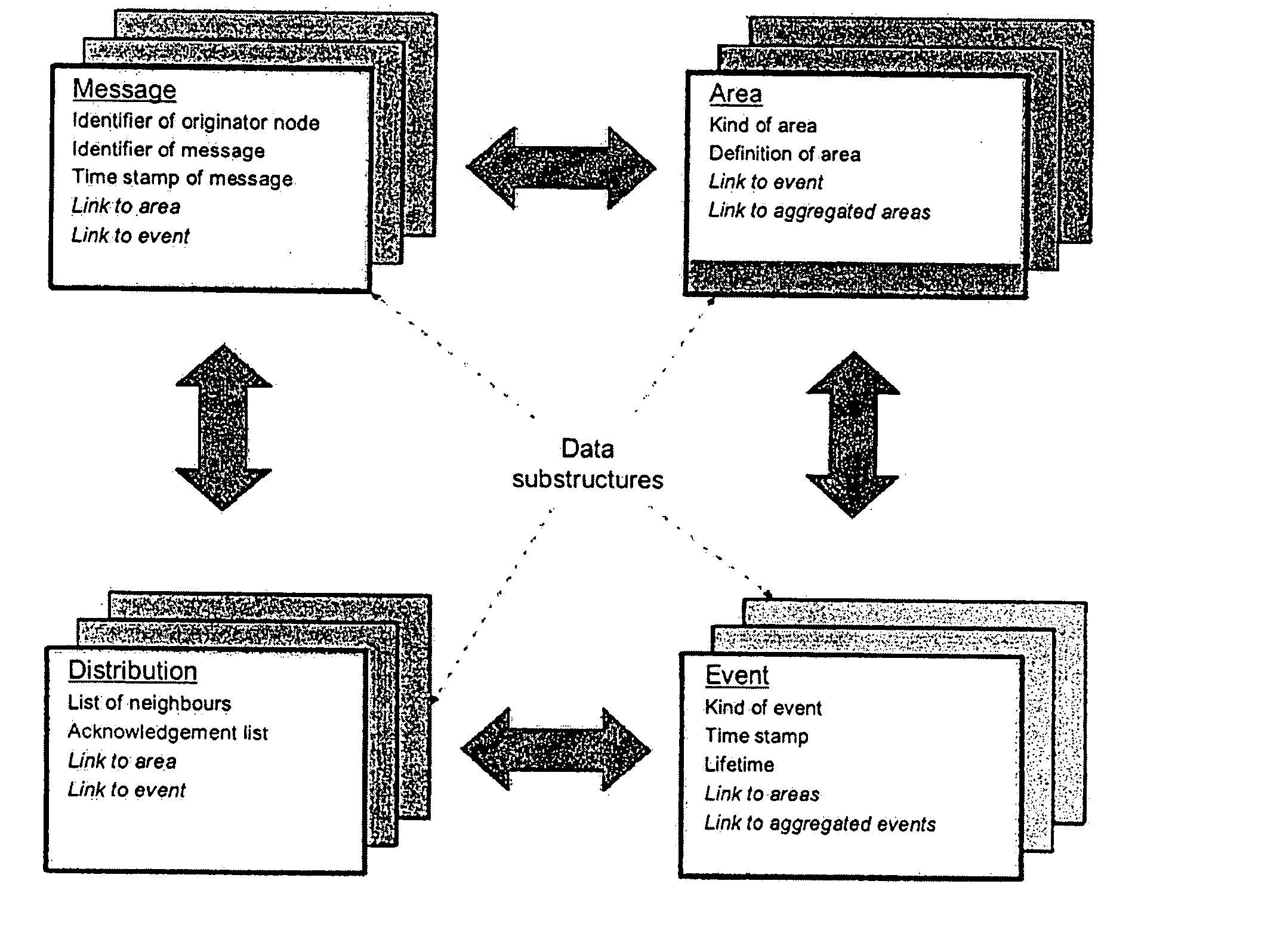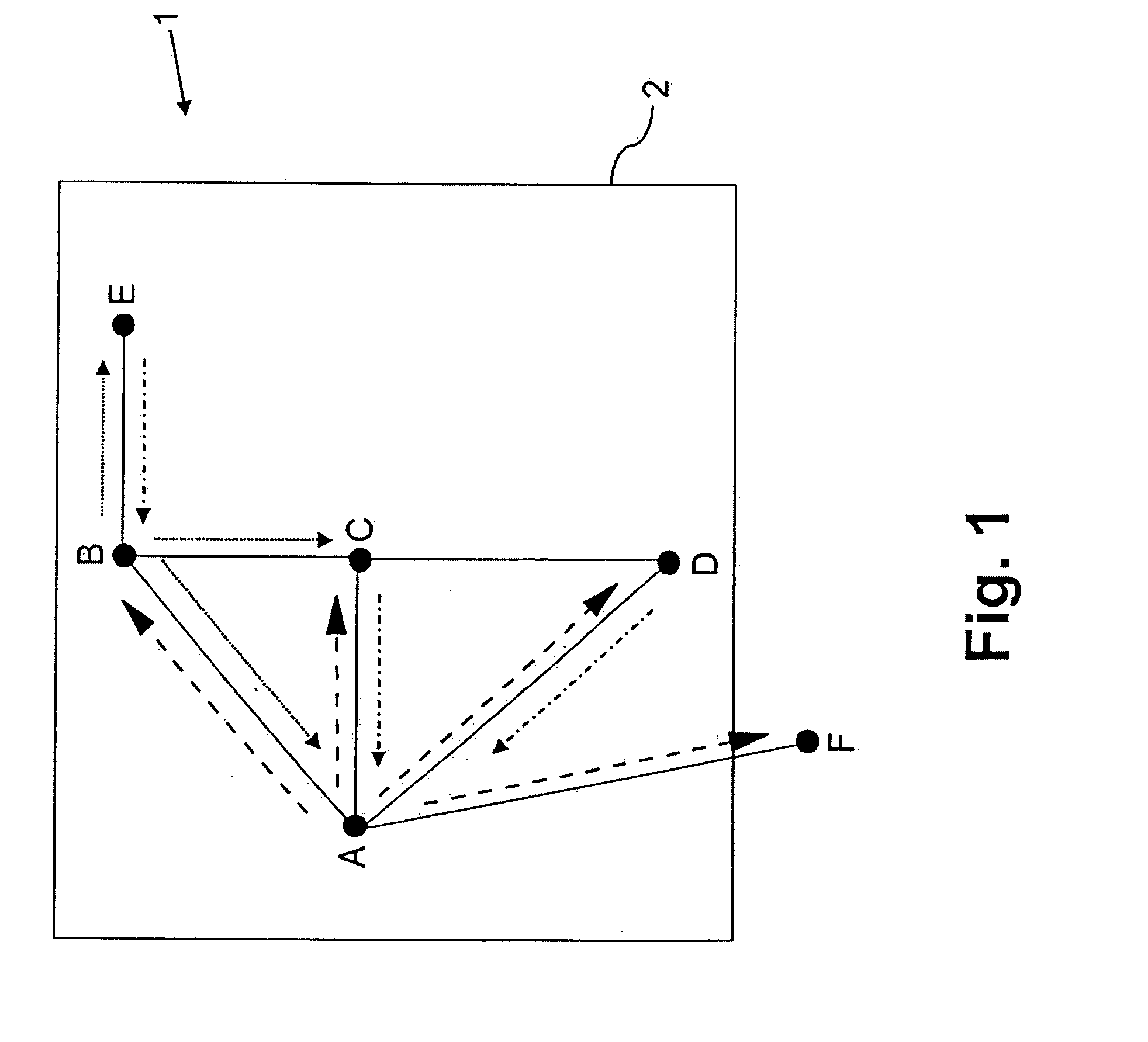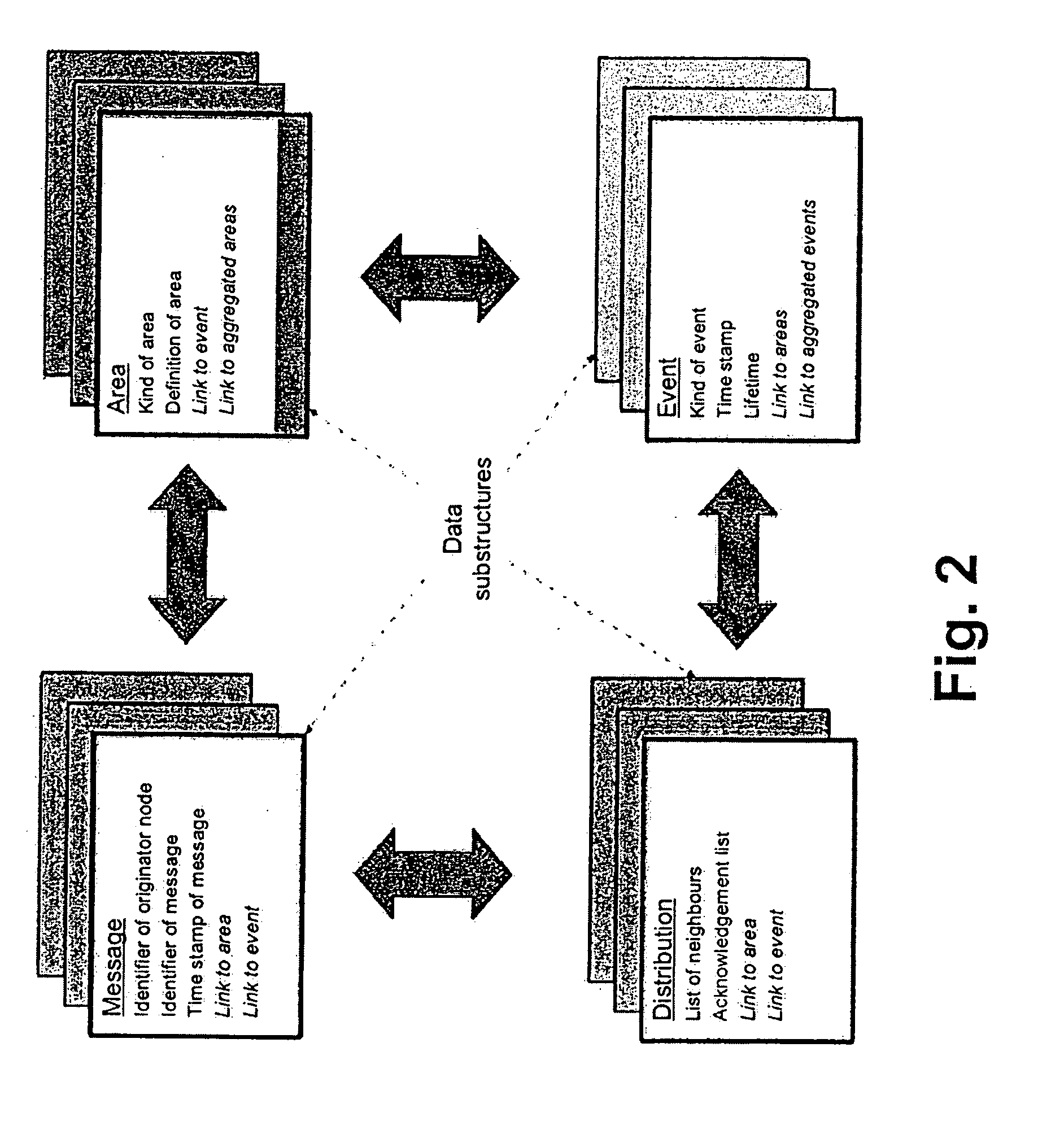Information distribution with improved reliability and efficiency for mobile ad hoc networks
- Summary
- Abstract
- Description
- Claims
- Application Information
AI Technical Summary
Benefits of technology
Problems solved by technology
Method used
Image
Examples
Embodiment Construction
[0036]FIG. 1 depicts schematically the functioning of the method according to the invention to distribute information of nodes of a mobile ad-hoc network 1. In FIG. 1, there are all in all six nodes (A, B, C, D, E and F) of the network 1 depicted. Node A is the originator node that has detected a specific event (as, for example, an icy road). On the base of this event, a geographic target area 2 is defined. The nodes A to E are within, node F is outside the geographic target area 2.
[0037] The continuous connecting lines between the individual nodes A to F mark single-hop connectivity on the base of the wireless transmission range. Node A distributes information corresponding to the detected event by sending a geo-broadcast message (dashed line) to the neighbored nodes B, C and D. Among other things, the message comprises a list in which the identifiers of the neighbored nodes within the target area 2, i.e. the nodes B, C and D, are listed.
[0038] Node F, which receives the message ...
PUM
 Login to View More
Login to View More Abstract
Description
Claims
Application Information
 Login to View More
Login to View More - R&D
- Intellectual Property
- Life Sciences
- Materials
- Tech Scout
- Unparalleled Data Quality
- Higher Quality Content
- 60% Fewer Hallucinations
Browse by: Latest US Patents, China's latest patents, Technical Efficacy Thesaurus, Application Domain, Technology Topic, Popular Technical Reports.
© 2025 PatSnap. All rights reserved.Legal|Privacy policy|Modern Slavery Act Transparency Statement|Sitemap|About US| Contact US: help@patsnap.com



